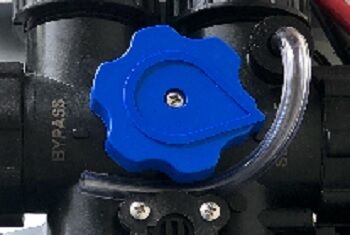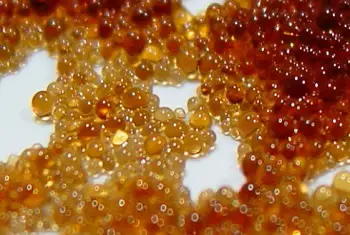You check your Hague Watermax water softener to see if you need to add salt to it but see that the salt level is right at the same level as it was when you checked it the last time. You are the only person that checks the salt, so why is your Hague Watermax not using salt?
If your Hague Watermax/Waterboss is not using salt, it is because the system has been bypassed, the salt has not gone down due to a salt bridge, the brine injector is clogged, the brine valve is not opening, the is a clog in the brine float assembly or the main piston needs to be replaced.
A Hague Watermax/Waterboss water softener has many parts that all need to be working correctly for it to properly soften your water. Since a water softener requires sodium to soften your water, if your Watermax is not using salt, it will not be softening your water.
How a Hague Watermax/Waterboss water softener uses salt and why yours is not using salt.
A Hague Watermax/Waterboss water softener keeps water in its brine tank to dissolve salt in the brine tank so when it is ready to regenerate its water softener resin there will be brine in the tank that is ready to use.
When a Hague Watermax/Waterboss needs to regenerate its water softener resin, the main piston will move to a position where it directs water over an area where there is a small part called an injector that has a tiny hole in it to create draw which pulls the brine from the brine tank.
The brine then flows along with the water flowing through the water-softener resin so the brine can perform a process called ion exchange to remove the hard ions that have built up on the water-softener resin.
Next, when the brine from the brine tank has been used up, the water softener will run clean water through the resin to remove the excess brine from the water-softer resin tank.
In order for a Hague Watermax/Waterboss to perform this water softener regeneration, the piston must move to the correct position, the injector must be clear to create a draw, the brine valve must be operational, there must be brine in the brine tank, and there must be water flowing through the system.
If any of these factors are not working correctly, the water softener will not be able to use salt and therefore the Hague Watermax will not be able to soften your water.
Why a Hague Watermax/Waterboss will not use salt when it is in bypass.
When you bypass your Hague Watermax/Waterboss water softener, the water to your home will no longer go through the water softener and therefore the water softener will have no water to draw the brine from your brine tank which means that there will be no need to create more brine from the salt in the brine tank.
By bypassing your water softener the water to your home will simply go through the bypass valve and then into your home without going through the water softener.
The bypass on your Hague Watermax/Waterboss is there in case of a leak on your water softener or if you have a reason to stop using your water softener.

By bypassing your Hague Watermax/Waterboss, you will stop water flowing through the system, essentially isolating it from the plumbing of your home.
Your Hague Watermax/Waterboss may not be using salt because of a “Salt Bridge”.
A salt bridge is when the salt at the top of your water softener’s brine tank dissolves slightly and then recrystallizes between the salt crystals creating a dome “Bridge” of crystallized salt that goes from one side of the brine tank to the other.
When this bridge forms, the salt that is underneath the bridge will get used, but the salt at the top will not drop down into the tank so it can be used to create more brine for the water softener to use.
How does a salt bridge form in a Hague Watermax/Waterboss water softener?
Humidity in the air is a common factor that creates a salt bridge and the inside corners and the gap behind the brine float tube of a Hague Waterboss brine tank, mixed with some humidity can create the perfect places for a salt bridge to start forming.
It just takes one crystal of salt to get stuck behind the brine float tube to start a salt bridge. Once one crystal has attached itself to the side of your brine tank another crystal can stick to it, and so on, and so on until a crust of salt forms from one side of the tank to the other.
If your Hague Watermax/Waterboss is not using salt, knock on the side of the brine tank with your knuckles, if the brine tank sounds hollow like there is a void inside of the tank, you may have a salt bridge.
You may be able to simply tap on the top of the salt in your brine tank to break the bridge and solve the problem. But before you do, check out my article about “How to clear a salt bridge” to make sure that you don’t cause any damage to your water softener.
Why does a clogged injector cause a water softener to not use salt?
The injector (sometimes called a venturi) of a Hague Watermax/Waterboss has a small hole going through it which creates a draw. If this small hole gets blocked or restricted, the draw could be reduced or eliminated completely.
If the draw becomes weak or stops, some or all of the brine in the brine tank will remain behind after the water softener resin regeneration process leaving the brine tank full of water and there will be less or no additional salt dissolved to make the brine, which means there will be no salt used and the level of the salt in your brine tank will not go down.
This will also mean that the water softener resin inside of your water softener will not get a sufficient dose of brine to regenerate the resin so it can remove more hardness from your water.
What causes a Hague Watermax/Waterboss brine valve to stop drawing brine?
In most cases, the brine valve on your Hague Watermax/Waterboss water softener may leak a little bit after several years of service, but it will continue to work well enough for it to draw brine from your brine tank.
But in some cases, the brine valve can get a layer of hardness or salt build-up on the seal that seals the valve piston. If this crusty layer becomes thick enough, the brine valve piston can no longer open and close the valve.
If the brine valve can no longer open, it will no longer be able to allow brine into the water softener tank where it is needed to regenerate the water softener resin.
If no brine gets into the water softener tank, no new salt will be needed to create new brine and therefore your Hague Watermax/Waterboss water softener will not use salt.
What can clog a brine float assembly so the brine can’t be drawn out?
Every time you add a bag of salt to your brine tank, there can be some dirt and debris mixed in with the salt. Although it is not very common, this debris can get lodged in the opening of the brine float assembly that draws the brine from your brine tank.
Even the water coming into your home that your Hague Watermax/Waterboss uses to fill its brine tank can have some debris in it that can clog the opening of a brine float assembly.
If you have been using pellet salt for a long period of time, there could be a layer of white particles at the bottom of your brine tank that does not dissolve and has been leftover from the pellet salt.
This build-up can get to the point where it blocks the opening on the brine tube and therefore the brine will not get drawn up the tube and no salt will be used. This build-up can be hard to remove but it can often be scooped up with a small shovel or coffee can.
If you do remove this build-up yourself, be sure to clean the area at the bottom of the brine tube thoroughly so the brine can be drawn by the water softener.
What happens to a Hague Watermax/Waterboss main piston that causes it to stop using salt?
The piston (connected to the drive end cap) has seals around it to keep the water flowing to the correct opening for each of the regeneration cycles.

As these seals wear down, the water can seep past the seals and not create a strong enough draw for the water softener to draw brine from the brine tank.
As the seals get older, they can begin to move less smoothly inside the water softener, and eventually, the piston can stop moving altogether.
If the piston is unable to move to the correct position to draw brine from the brine tank, the water softener will not be able to use any salt and no longer be able to soften your water.
Will my Hague Watermax/ Waterboss water softener get damaged if it stops using salt?
Without sodium ions provided by the salt that you add to your Hague Watermax/ Waterboss brine tank, the water softener will not be able to perform the ion exchange process required to regenerate its water softener resin.
The ion exchange process essentially cleans off the hard minerals and iron from the water softener resin so it is ready to remove more hardness and iron from your water.

If the water softener resin is not regenerated (cleaned) often enough, the hard minerals and iron may become permanently caked onto the resin making it unable to continue to soften your water.
To Sum Up!
A Hague Watermax/Waterboss water softener can provide you with softened water for many years with minimal maintenance. But just like any mechanical device, it may not work properly forever.
If your Hague Watermax/Waterboss is not using salt, it will not be able to regenerate its water-softener resin which means you will end up with hard water. Check for these reasons why your Hague Watermax/Waterboss may not be using salt and you should be able to get it softening your water again.
If you can’t get your Hague Watermax/Waterboss working again, check out my Recommended Water Softeners for a replacement.


Water keeps leaking from the black tube in the back forcing me to put it in bypass mode to stop the water from leaking. What is wrong with my system and why is it leaking water in service mode?
Hello Sao and thank you for the question.
It sounds to me like you are referring to the brine tube that comes out of the brine tank.
There is an O ring that seals the black tube where it connects at each end.
If this O ring becomes worn or dirty, water can leak past it and down the outside of the tube.
You can bypass your water softener and then slowly disconnect the black tube from the brine tank. Remove and clean the O ring and then put a small amount of O ring lubricant on the O ring to help it seal correctly.
If the leak does not stop, the fitting that the tubing goes into might be cracked and need to be replaced.
I hope this helps.
Paul